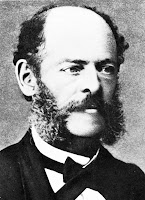Researchers have finally found out why the jade-green cup (showed bellow) appears red when lit from behind.
The colorful secret of a 1,600-year-old Roman chalice at the British Museum is the key to a supersensitive new technology that might help diagnose human disease or pinpoint biohazards at security checkpoints.
The colorful secret of a 1,600-year-old Roman chalice at the British Museum is the key to a supersensitive new technology that might help diagnose human disease or pinpoint biohazards at security checkpoints.
«The Romans may have first come across the colorful potential of nanoparticles by accident, but they seem to have perfected it.»

The glass chalice, known as the Lycurgus Cup because it bears a scene
involving King Lycurgus of Thrace, appears jade green when lit from the
front but blood-red when lit from behind—a property that puzzled
scientists for decades after the museum acquired the cup in the 1950s.
The mystery wasn’t solved until 1990, when researchers in England
scrutinized broken fragments under a microscope and discovered that the
Roman artisans were nanotechnology pioneers: They’d impregnated the
glass with particles of silver and gold, ground down until they were as
small as 50 nanometers in diameter, less than one-thousandth the size of
a grain of table salt. The exact mixture of the precious metals
suggests the Romans knew what they were doing, «an amazing feat», says
one of the researchers, archaeologist Ian Freestone of University
College London.
The ancient nanotech works something like this: When hit with light,
electrons belonging to the metal flecks vibrate in ways that alter the
color depending on the observer’s position. Gang Logan Liu, an engineer
at the University of Illinois at Urbana-Champaign, who has long focused
on using nanotechnology to diagnose disease, and his colleagues realized
that this effect offered untapped potential. «The Romans knew how to
make and use nanoparticles for beautiful art», Liu says. «We wanted to
see if this could have scientific applications».
When various fluids filled the
cup, Liu suspected, they would change how the vibrating electrons in the
glass interacted, and thus the color. (Today’s home pregnancy tests
exploit a separate nano-based phenomenon to turn a white line pink).
Since the researchers couldn’t put liquid into the precious artifact itself, they instead imprinted billions of tiny wells onto a plastic plate about the size of a postage stamp and sprayed the wells with gold or silver nanoparticles, essentially creating an array with billions of ultra-miniature Lycurgus Cups. When water, oil, sugar solutions and salt solutions were poured into the wells, they displayed a range of easy-to-distinguish colors—light green for water and red for oil, for example. The prototype was 100 times more sensitive to altered levels of salt in solution than current commercial sensors using similar techniques. It may one day make its way into handheld devices for detecting pathogens in samples of saliva or urine, or for thwarting terrorists trying to carry dangerous liquids onto airplanes.
The original fourth-century C.E. Lycurgus Cup, probably taken out only for special occasions, depicts King Lycurgus ensnared in a tangle of grapevines, presumably for evil acts committed against Dionysus, the Greek god of wine. If inventors manage to develop a new detection tool from this ancient technology, it’ll be Lycurgus’ turn to do the ensnaring.
Since the researchers couldn’t put liquid into the precious artifact itself, they instead imprinted billions of tiny wells onto a plastic plate about the size of a postage stamp and sprayed the wells with gold or silver nanoparticles, essentially creating an array with billions of ultra-miniature Lycurgus Cups. When water, oil, sugar solutions and salt solutions were poured into the wells, they displayed a range of easy-to-distinguish colors—light green for water and red for oil, for example. The prototype was 100 times more sensitive to altered levels of salt in solution than current commercial sensors using similar techniques. It may one day make its way into handheld devices for detecting pathogens in samples of saliva or urine, or for thwarting terrorists trying to carry dangerous liquids onto airplanes.
The original fourth-century C.E. Lycurgus Cup, probably taken out only for special occasions, depicts King Lycurgus ensnared in a tangle of grapevines, presumably for evil acts committed against Dionysus, the Greek god of wine. If inventors manage to develop a new detection tool from this ancient technology, it’ll be Lycurgus’ turn to do the ensnaring.
Source: http://www.smithsonianmag.com/history-archaeology/This-1600-Year-Old-Goblet-Shows-that-the-Romans-Were-Nanotechnology-Pioneers-220563661.html

















